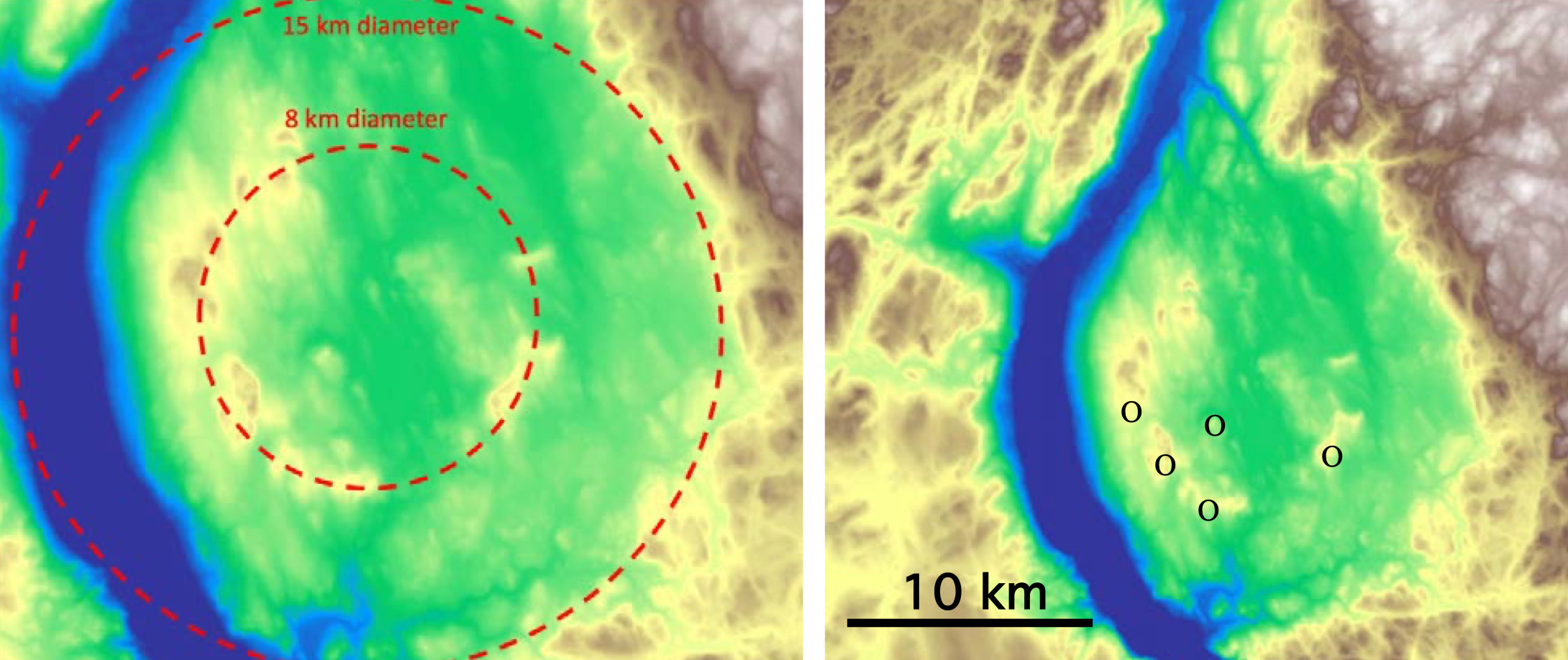Google Maps user stumbles upon what could be crater from impact of giant asteroid
Last crater of this size was found only in 2013, scientists say
A camper scrolling through Google Maps has stumbled upon what could be a crater caused by a giant asteroid impact in Canada.
Joël Lapointe discovered the likely crater with a spherical pit of about 15km (9.3miles) across surrounding Marsal Lake in Quebec’s Côte-Nord region, CBS News reported.
Researchers from the European Centre for Research and Teaching in Environmental Geosciences (CEREGE) are currently assessing the site to determine if it is indeed a meteorite impact crater.
“A roughly circular depression over 15km in diameter is highlighted on satellite imagery by the arcuated Magpie Lake and river to the West,” scientists wrote.
Satellite images suggest that the formation has an average altitude difference between the floor and the rim of about 200m to 300m, and along with a faint circular inner ring 8km in diameter.

If confirmed to be formed by meteorite impact, the crater could be a major find as the last one of this size was found only in 2013.
“Based on the already available preliminary evidence, Lake Marsal seems to be a serious candidate to become the 11th confirmed impact structure from Quebec,” researchers wrote in an analysis presented at the 86th Annual Meeting of the Meteoritical Society 2024.
Impact craters form when objects like asteroids or meteorites crash onto the solid surface of a planet or a moon creating a dent.

Studying such craters can reveal fresh insights about the origin of the space rock and the cosmic objects they struck.
Preliminary studies of samples from the site suggest at least one of them contains zircon – a mineral that usually forms under intense pressure and heat of a meteorite impact.
Researchers suspect the crater could have been formed sometime about 38-450 million years ago.
More than 30 of the 200 craters known currently across the world are in Canada, according to scientists.

However, researchers are waiting to conduct more tests before making definitive statements on the pit’s origin.
They hope a field campaign to investigate the site could help determine its true origin.
“Confirmation of impact origin may be gained from the available sampling or else may wait for a future dedicated expedition,” researchers said.
“We thank Joel Lapointe, from Shawinigan, Quebec, for pointing to us this potential crater,” they added.
Join our commenting forum
Join thought-provoking conversations, follow other Independent readers and see their replies
Comments
Bookmark popover
Removed from bookmarks